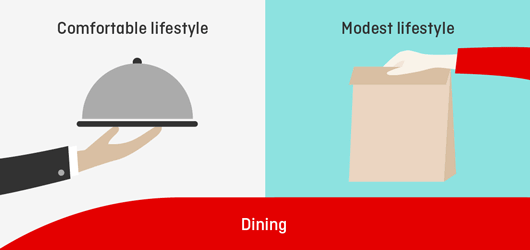If you’ve met with one of our friendly Super Advisers or read our online resources, you’ve probably heard us say that, when it comes to how much money you need in retirement, there’s no one set figure that works for everyone.
However, there are a couple of figures that we can use as a guide. One of these is the ASFA Retirement Standard, put together by the Association of Superfunds of Australia.
This standard shows the lump sum amount needed by the average Australian to fund a comfortable or modest retirement – it assumes that the retiree owns their own home, and will draw down all their capital and receive a part Age Pension.
The lump sum figures have been the same for a number of years but increased in the March 2023 quarter, with ASFA explaining that the high rate of inflation over the last year has substantially raised the amount of spending required to achieve either ASFA’s Modest or Comfortable retirement figures.
“While the rate of inflation may ease going forward, the costs of either a modest or comfortable retirement have been permanently ratcheted up by recent developments in living costs,” ASFA stated.
What balance do you need?
What’s the difference between a comfortable retirement and a modest retirement?
How can the lump sum last through retirement?
The way you spend is likely to change
Along with the fact that the amount will stay invested, it’s also important to remember that the way people spend their money as they get older typically changes.
ASFA explains that as people age, their spending requirements change as they are often unable to engage in the same types of activities and require a higher level of care and support. This has an impact on their budget and expenditure requirements.
For example, older retirees tend to spend more on assistance in the home, including for cleaning services and meals, as well as contributions towards home and community care services. They also tend to have increased out-of-pocket expenses for major medical procedures and ongoing chemist and other medical expenses. On the other hand, they also tend to spend less on holidays and other leisure activities outside the home, most likely reflecting their reduced capacity for activity.
Was this helpful?
We're here to help
If you want to learn more or need help with making a decision about your super, you can get simple advice over the phone or face to face. It’s included as a part of your membership so there’s no extra cost.



